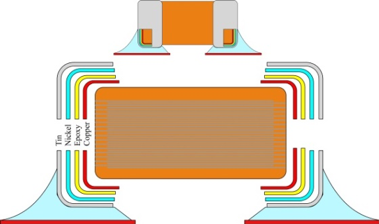How Manufacturing Leaders Are Adapting To Industrial Workforce Changes
By Nicole Neumarker, COO of WorkForce Software
 The rapid advances in the manufacturing industry have driven global development and modernization, and many organizations are finding there are gaps in keeping pace. Like nearly every other sector, digital transformation has come for manufacturing, making an impact that forces companies to change.
The rapid advances in the manufacturing industry have driven global development and modernization, and many organizations are finding there are gaps in keeping pace. Like nearly every other sector, digital transformation has come for manufacturing, making an impact that forces companies to change.
While many areas of manufacturing are performing well — electronics manufacturers reportedly showed strong profits in the final quarter of 2023, for example — there is still a need to reevaluate challenges and act to solve them.
The State of the Manufacturing Workforce 2024 report highlights how industry leading companies are embracing digital transformation and evolving workforce demands. The changing workforce demographic is one of the most prominent trends shaping the electronics manufacturing landscape. The industry is witnessing a generational shift, with Baby Boomers and Gen X workers gradually retiring (they only make up 16% of today’s manufacturing deskless workforce) and Millennials and Gen Z workers taking their place (comprising 59% of that workforce).
To successfully navigate this demographic shift, manufacturers must develop strategies that embrace the unique needs and preferences of a multigenerational workforce. This includes investing in intuitive, user-friendly technologies that support personalized experiences that workers will adopt. Some 85% of the leaders surveyed said they understood the importance of making these tech investments in the next one to two years.
By fostering a sense of belonging and purpose, companies can improve employee satisfaction, productivity, and retention across all demographic groups.
Companies that proactively address changing demographics and invest in modern workforce management strategies will be best positioned for success. Linking workers of each generation together offers opportunities for mentoring and collaboration to accelerate knowledge transfer and adoption of new practices. By embracing their workforce’s diverse skills, perspectives, and expectations, manufacturers can drive innovation, improve operational efficiency, and maintain a competitive edge.
Managing change and evolving the workforce
Companies adopting new technologies and processes need to prepare their workforce to embrace these changes. However, the report found that 72% of business transformation efforts are unsuccessful, largely due to workforce resistance and lack of leadership support.
Communicating the benefits and providing resources and support to help employees adapt is crucial. Training and development programs can equip workers with the technical and soft skills they need to succeed.
Investing in employee training and development facilitates successful change management and plays a crucial role in talent retention. However, 65% of companies surveyed in the report are not investing in modern workforce management technology, resulting in 20% lower productivity on average.
In addition to training and development, creating a positive employee environment helps attract and retain top talent. The report revealed that 68% of companies already have an employee experience strategy, while 21% are working to implement one. Optimized productivity was cited as one of the top three benefits of implementing such a strategy.
By investing in modern workforce management strategies and technologies, manufacturers can create a resilient, adaptable workforce that drives innovation and growth in the years to come.
Enhancing communication and collaboration
Effective communication and collaboration are essential for driving productivity and operational efficiency in the manufacturing industry. However, aligning communication across departments, sites, and geographies can be challenging, particularly for large organizations.
Manufacturing leaders should streamline and simplify the way they communicate with their workers and enable communications between workers. The report found that unified, digital, in-the-moment communication tools can increase operational efficiency, optimize productivity, and improve engagement levels across diverse employees and demographics.
Open and transparent communication also creates avenues for receiving valuable employee feedback, which is essential for improving working environments and fostering a culture of continuous improvement. By tapping into the knowledge and insights of workers performing their jobs, employers benefit with new insights into barriers experienced by their employees every day and tap into the desire for employees to feel valued and heard in a more meaningful way. Many leaders recognize the importance of new communication and collaboration tools, with 48% of survey respondents currently using these solutions and 75% planning to invest in them over the next three years.
By leveraging modern communication technologies and workforce management systems, manufacturing leaders can break down silos, improve collaboration, and drive meaningful improvements in productivity and operational efficiency. Companies prioritizing effective communication and collaboration will be better positioned to adapt to changing market conditions and maintain a competitive edge.
Embracing technology to meet compliance
With regulations varying across sub-sectors and geographies, remaining compliant can be daunting for manufacturers. The report found that 63% of companies understand that one of the main benefits of modern workforce management technology is enabling industry compliance.
Automated compliance systems can provide real-time monitoring, reporting, and documentation, enabling manufacturers to proactively identify and address potential compliance issues before they result in costly fines or legal action. In an industry where fines can average $50,000 per violation, adopting these systems can help manufacturers avoid significant financial penalties and reputational damage. As new regulations are introduced or existing ones are updated, these systems can quickly adapt to ensure ongoing compliance. This adaptability is particularly important for sustainability, labor, and product safety, where regulations are subject to frequent changes.
As we look to the future, it is clear that the success of the manufacturing industry will depend on its ability to adapt to changing demographics and overall modernization. Companies that prioritize the development of their workforce, embrace modern technologies, and stay ahead of regulatory requirements will be the ones to thrive. By taking a holistic approach to workforce management and investing in the right solutions, companies can unlock the potential of their workforce and drive long-term growth and success.












